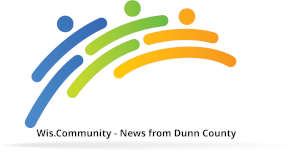Over the past two months I received numerous postcards with one main message: my public school has changed.
The stories shared came from all over the state: larger class sizes, fewer teachers and aides, fewer electives and core class sections, fewer reading and special ed teachers, fewer guidance counselors, fewer janitors and support staff, longer bus routes, book budgets slashed, maintenance delayed, sports dropped or consolidated.
Results of a new survey of Wisconsin superintendents provide numbers to support the message on the postcards: Schools are losing teachers and staff. Programs are cut back.
Public schools suffered historic budget cuts. The state budget cut $1.6 billion from schools. Wisconsin ranks second in the nation in cuts to school aid per student this year.
In September superintendents across Wisconsin reported on actions taken in response to the deep budget cuts. Over 80% of superintendents responded to the survey, including all but two districts in the 31st Senate District.
Results show substantial cuts in teachers and support staff; changes in programs and class sizes. Ninety-seven percent of schools experienced budget cuts. Almost nine in ten students attend a school that suffered a net staff reduction. One in five students attends a school where five or more programs experienced staff cuts. The program most likely to experience staff cuts was special education; followed by library/media centers.
State-wide, 4000 teachers, support staff and administrators were laid-off or did not have contracts renewed. Another 4500 teachers and others retired. This retirement is two-and-one-half times the rate of the previous year. Only 60% of those who left were replaced.
Since staff make up 70% to 80% of a school’s budget, it makes sense deep cuts result in fewer opportunities for students.
I examined survey reports of cuts made to schools in the 31st Senate District. I discovered western Wisconsin children faired worse than the state average. State-wide one quarter of schools suffered cuts or increased class sizes in core classes of English, Math, Science and Social Science; among western Wisconsin districts it was more than a third.
State-wide about fifteen percent of schools saw cuts or increased class sizes in Advanced Placement (AP); in our Senate District changes affected about a third of districts.
About a quarter of districts state-wide reported cuts or increased class sizes in vocational and technical classes; in western Wisconsin almost half.
Most striking were changes to art, music and physical education. Two-and-a-half times as many districts in western Wisconsin reported cuts or increased class sizes in art, music and physical education as the state-wide average.
The Governor’s spokesman criticized the survey saying lay-offs happened in areas that ‘didn’t adopt the reforms put in place by Governor Walker’.
But survey results show no significant difference in teacher job loss between those schools with and those without teacher union contracts.
Things are not expected to improve. State-wide two-thirds of districts expect next year’s staff cuts to be as bad or worse. In our Senate District, of those who reported their plans for the future, over 80% of superintendents expect cuts next year to be as deep or deeper. Part of the reason: 45% of superintendents reported using federal stimulus money they saved. This will not be available next year.
Schools are suffering and the future of our children is at stake.
Deep cuts to our schools did not need to happen. The state budget increased spending by 2% and more money went to private school voucher programs. There is a better way to balance the state budget with the same dollars. I wrote an alternative budget returning the majority of reduced aid to public schools while paying down debt and not raising taxes.
Fixing the state education budget is a solvable problem. We can gain efficiencies without jeopardizing our children’s future. State Superintendent Tony Evers introduced a plan to revamp the school funding formula and developed task forces on teacher evaluation and accountability. We must move on these plans.
Public education is the most important thing state government does. It takes up the largest portion of our tax dollars and affects every community in our state. We must get it right.
The full survey can be found here: http://dpi.wi.gov/eis/pdf/wasdasurveyresults.pdf
